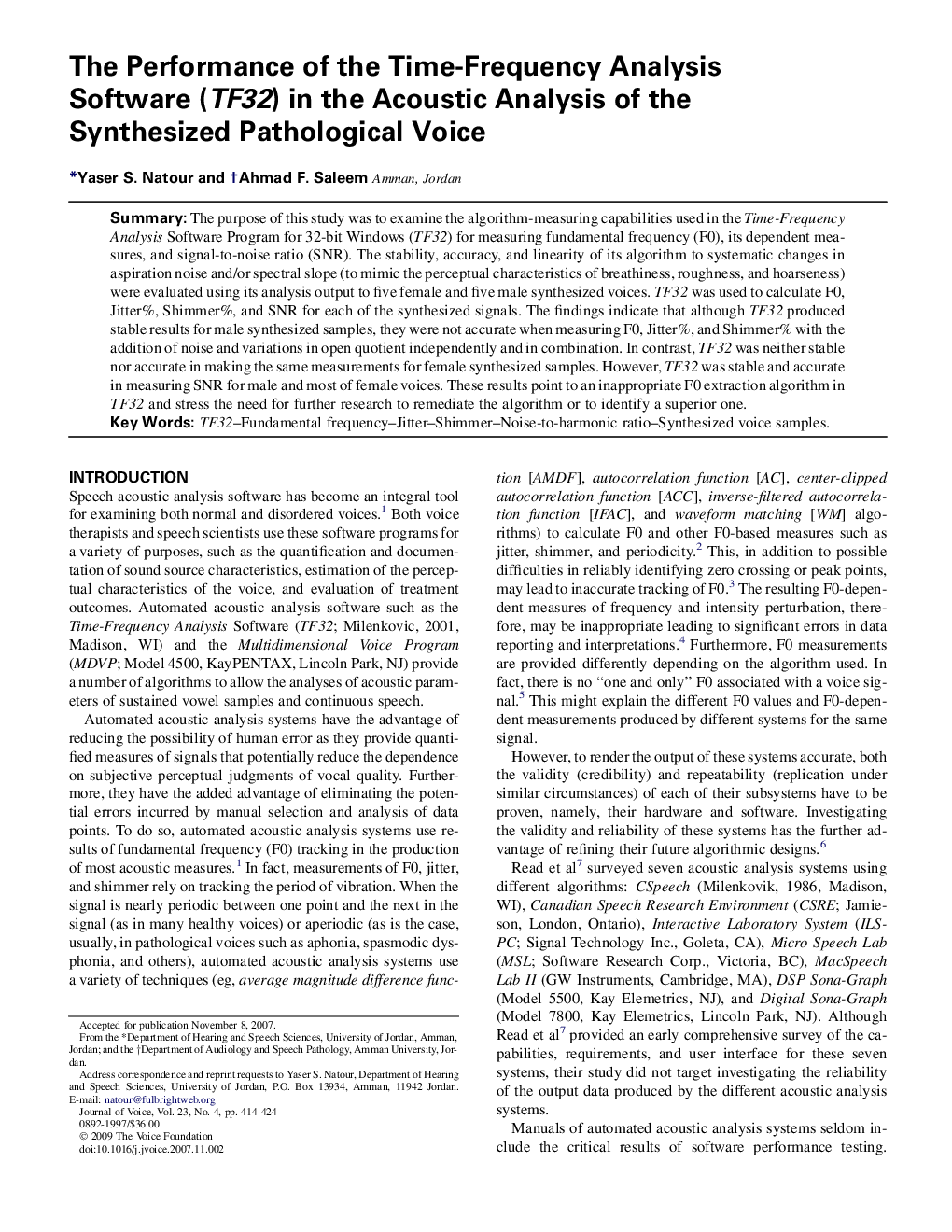| Article ID | Journal | Published Year | Pages | File Type |
|---|---|---|---|---|
| 1102322 | Journal of Voice | 2009 | 11 Pages |
SummaryThe purpose of this study was to examine the algorithm-measuring capabilities used in the Time-Frequency Analysis Software Program for 32-bit Windows (TF32) for measuring fundamental frequency (F0), its dependent measures, and signal-to-noise ratio (SNR). The stability, accuracy, and linearity of its algorithm to systematic changes in aspiration noise and/or spectral slope (to mimic the perceptual characteristics of breathiness, roughness, and hoarseness) were evaluated using its analysis output to five female and five male synthesized voices. TF32 was used to calculate F0, Jitter%, Shimmer%, and SNR for each of the synthesized signals. The findings indicate that although TF32 produced stable results for male synthesized samples, they were not accurate when measuring F0, Jitter%, and Shimmer% with the addition of noise and variations in open quotient independently and in combination. In contrast, TF32 was neither stable nor accurate in making the same measurements for female synthesized samples. However, TF32 was stable and accurate in measuring SNR for male and most of female voices. These results point to an inappropriate F0 extraction algorithm in TF32 and stress the need for further research to remediate the algorithm or to identify a superior one.
